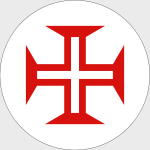Hobby Master HA8003 Portuguese Hawker Fury Mk. I Fighter - Grupo Independente de Aviao de Proteco e Combate Independent Escort and Fighter Group, Tancos, 1934 (1:48 Scale)
"Glory is the end."
- Motto of No. 43 Squadron
 The Hawker Fury was a British biplane fighter aircraft used by the Royal Air Force in the 1930s. It was originally named the Hornet and was the counterpart to the Hawker Hart light bomber.
The Hawker Fury was a British biplane fighter aircraft used by the Royal Air Force in the 1930s. It was originally named the Hornet and was the counterpart to the Hawker Hart light bomber.
The Hawker Fury was a development of the earlier Hawker F.20/27 prototype fighter, replacing the F.20/27's radial engine with the new Rolls-Royce F.XI V-12 engine (later known as the Rolls-Royce Kestrel), which was also used by Hawker's new light bomber, the Hawker Hart. The new fighter prototype, known as the Hawker Hornet, first flew at Brooklands, Surrey, in March 1929. The Hornet was a single engined biplane, with single bay wings, initially powered by a 420 hp (313 kW) Rolls-Royce F.XIC engine enclosed by a smooth, streamlined cowling, but was quickly re-engined with a 480 hp (358 kW) Kestrel IS . It was evaluated against the similarly powered Fairey Firefly II, being preferred because of its better handling and its all metal structure compared with the mainly wooden construction of the Firefly.
The Hornet was purchased by the Air Ministry at the start of 1930, and was subject to further evaluation, with a small initial production order for 21 aircraft (to be designated Hawker Fury - as the Air Ministry wanted fighter names that "reflected ferocity") placed during 1930. The Fury I made its maiden flight at Brooklands with chief test pilot George Bulman at the controls on March 25th, 1931.
The Fury was the RAF's first operational fighter aircraft to be able to exceed 200 mph (322 km/h) in level flight. It had highly sensitive controls which gave it superb aerobatic performance. It was designed partly for the fast interception of bombers and to that end it had a climb rate of almost 2,400 ft/min (730 m/min, powered by a 525 hp/391 kW Kestrel engine).
An experimental prototype, the High Speed Fury, was built to test design features for Hawker's planned competitor for the F.7/30 fighter competition (the Hawker P.V.3) as well as for more general development. While the P.V.3 was unsuccessful owing to the use of the unreliable evaporatively cooled Rolls-Royce Goshawk engine, many of the improvements tested on the High Speed Fury were incorporated in an improved Fury II, with a cleaned up airframe and reduced drag, and powered by a 690 hp (515 kW) Mk4 Kestrel engine. These improvements gave improved speed and rate of climb.
The designer at Hawker, Sidney Camm, designed a monoplane version of the Fury in 1933. It was not developed until the Rolls-Royce developed what was to become their famous Merlin engine. The design was then revised according to Air Ministry specification F5/34 to become the prototype Hawker Hurricane.
Pictured here is a 1:48 scale replica of a Portuguese Hawker Fury Mk. I biplane fighter aircraft that was attached to Grupo Independente de Aviao de Proteco e Combate Independent Escort and Fighter Group, then deployed to Tancos during 1934.
Sold Out!
Dimensions:
Wingspan: 8-inches
Length: 5-3/4-inches
Release Date: June 2011
Historical Account: "GIAPC" - Although aircraft had been introduced in Portugal before 1914, to be used by the Army it is only at that date with the official creation of the EAM - Escola de Aeronautica Militar (School of Military Aeronautics) in May 14th, 1914, that begins the long history of military aviation in Portugal. The school, located at Vila Nova da Rainha near Lisbon, only started to operate in 1916, the first flight taking place on July 17th, 1916, in a Deperdussin piloted by Santos Leite.
In 1918 the Serviao Aeronutico Militar (Military Aeronautical Service) was reorganized with six different departments, among them the EAM, and the Parque de Material Aeronutico (Aeronautical Material Depot) embryo of the future Air Force workshops - OGMA.
The first operational unit was created in 1919 at Amadora (north of Lisbon) and was called Grupo de Esquadrilhas de Aviaao Republica ( Republica Flight Group), with Esquadrilhas de Combate (Fighter flights) equipped with Spad's and Esquadrilhas de Bombardeamento e Observaao (Bomber and Recce Flights) equipped with Breguet 14.
Meanwhile, in 1917 due to the war situation in Africa, an expeditionary force was dispatched to Moaambique equipped with Farman F.40 , staying there for some years. In addition, 9 Caudron G-3 were sent by sea to the Portuguese colony of Angola where they arrived in September 17th, 1918, at the Moaamedes port in the southern coast.
They formed the Esquadrilha Expedicionaria do Lubango (Lubango Expeditionary Flight) at the town of Lubango. However due to the lack of appropriate fuel, only in January 1923 flight activity was started. By that time they had also received 9 Breguet 14's. In 1926 due mainly to the lack of funds, the military aviation in Angola was extinguished and the remaining material sent back to Portugal.


